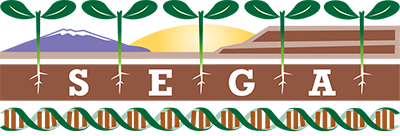You are here
Genetic‐based plant resistance and susceptibility traits to herbivory influence needle and root litter nutrient dynamics
Publication Type:
Journal ArticleSource:
Journal of Ecology, Volume 95, Issue 6 (2007)URL:
http://onlinelibrary.wiley.com/doi/10.1111/j.1365-2745.2007.01297.x/fullAbstract:
Summary 1 It is generally assumed that the same factors drive the decomposition of both litter and roots and that nutrient release from litter and roots is synchronized. However, few studies have explicitly tested these assumptions, and no studies have examined whether plant genetics (i.e. plant susceptibility to herbivory) could affect these relationships. 2 Here we examine the effects of herbivore susceptibility and resistance on needle and fine root litter decomposition of pi帽on pine, Pinus edulis . The study population consists of individual trees that are either susceptible or resistant to herbivory by the pi帽on needle scale, Matsucoccus acalyptus , or the stem-boring moth, Dioryctria albovittella . Genetic analyses and long-term experimental removals and additions of these insects to individual trees have identified trees that are naturally resistant or susceptible to M. acalyptus and D. albovittella . In addition, these herbivores increase litter chemical quality and alter soil microclimate, both of which mediate decomposition in ecosystems. 3 The effects of herbivore susceptibility and resistance on needle litter mass and phosphorus (P) loss, when significant, are largely mediated by herbivore-induced changes to microclimate. But the effects of herbivore susceptibility and resistance on root litter nitrogen (N) and P retention, and needle litter N retention, are largely governed by herbivore-induced changes to litter chemical quality. Whether a particular tree was resistant or susceptible to herbivores exerted a large influence on net nutrient release, but the direction of herbivore influence varied temporally. 4 The controls on decomposition vary between herbivore-susceptible and herbivore-resistant phenotypes. This suggests that understanding decomposition and nutrient retention in some ecosystems may require considering the effects of herbivores on above- and below-ground processes and how these effects may be governed by plant genetics. 5 Synthesis . Because so few studies have attempted to quantify genetic components of ecosystem processes, the integration of ecosystem ecology with population genetics has the potential to place ecosystem science within a genetic and evolutionary framework. Using field trials of known genetic composition, ecosystem scientists may use quantitative genetics techniques to explore ecosystem traits just as population geneticists have used these techniques to explore traditional traits such as resistance to insects.
- Log in to post comments
- Google Scholar
- RTF
- EndNote XML
- RIS
Theme by Danetsoft and Danang Probo Sayekti inspired by Maksimer
